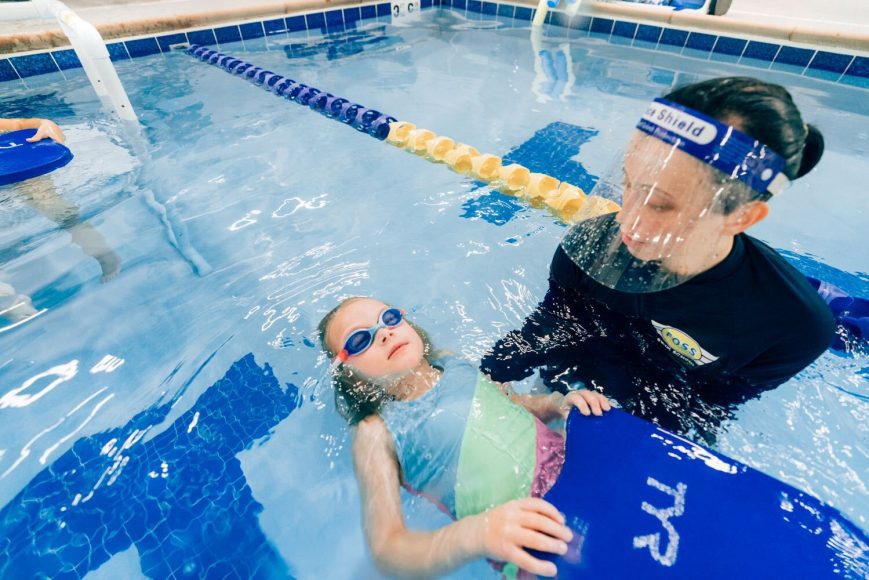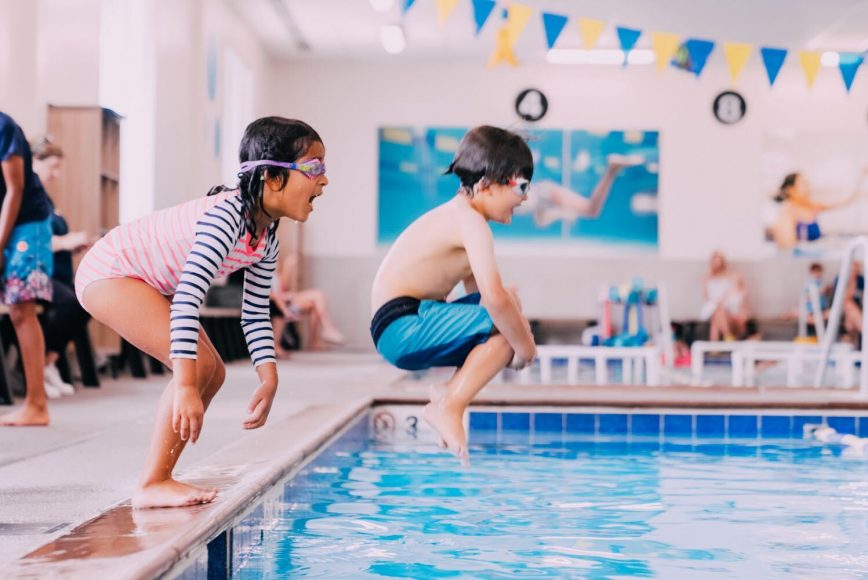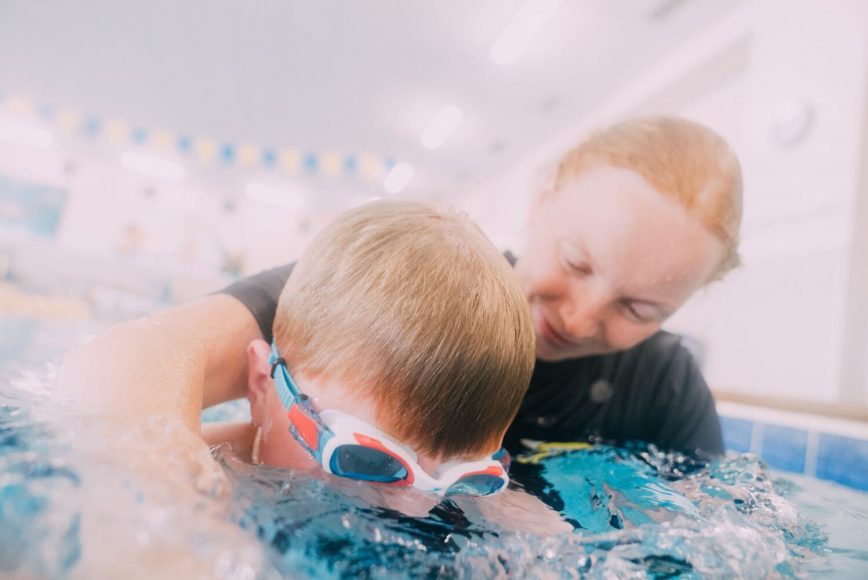Spending time playing and swimming in the water is a cherished summer tradition, and for good reason: it’s fun! Unfortunately, we all know that swimming comes with its own dangers.
St. Louis Mom and our partner, Foss Swim School, want to help ensure that your summer is filled with splashing and laughter as you enjoy water play safely. We’re here with a few gentle reminders to support your family as you head to the pool, beach, or lake, but first, some of the scary news.
Did you know …
- Drowning is the number one cause of injury-related death for children
ages one to four. - Drowning kills nearly 1,000 children every year.
- According to Total Aquatics Programming data, the summer months
(May-August) account for two-thirds of annual childhood drowning incidents.
Reading these statistics hurts my mama heart. I don’t want any family to experience this pain, and I want to see those numbers reduced to zero. The good news is that there are a few simple steps you and your family can take to drastically reduce the risk of drowning and feel much calmer approaching pool season.
Enroll in Swim Lessons!
Swim lessons really make a difference! Statistics show that taking formal swimming lessons reduces a child’s risk of drowning by 88 percent. That’s huge!
Enrolling your children from a very young age in swim lessons at a place like Foss Swim School will help them increase muscle memory through the repetitive practice of basic life-saving techniques: crab-pinching the edge of the pool, properly getting in and out of the pool, safely going underwater, learning to roll on their back, learning to tread water, and more.
Skip the Floaties & Puddle Jumpers and opt for U.S. Coastguard Approved Lifejackets
Have you heard that floaties and puddle jumpers can actually do more harm than good? I learned this when I first enrolled my own kids in formal swim lessons, and I can’t un-hear that.
Floaties and puddle jumpers can give children a false sense of security in the water, they can easily come loose or deflate, and they teach children to float in a vertical position which is the opposite of how our bodies actually float – safely on our backs.
If your kid is not ready to head into the pool without any kind of floating device, find ones with Coast Guard approval. These are constructed to meet Coast Guard regulations for performance, construction, and materials. Before your little one heads into the water, ensure that their life jacket fits properly to keep their head above water and allow for proper breathing.

Wear Bright Colored Swimwear!
You don’t want your little one’s swimsuit to blend in with the water! Find swimwear with bright colors so you can quickly spot a swimmer in need of help. For more on this topic, please check out our past blog article with Foss Swim School: Swimming in Colors at Foss Swim School: Where Every Month is Water Safety Month.
Choose Properly Fitted Goggles
Wearing goggles helps your child see where they are heading around the pool! Like a life jacket, fit matters here too! Make sure they fit around the eye comfortably (the top of the goggle cup should fit under the eyebrow and comfortably seal on the bottom under the eye socket), that the nose piece is not too tight or too wide, and the straps easily adjust.
Play it Cool and Follow the Rules
I love this little rhyme. My kids can get in an extra silly mood when we’re outside playing, but when there’s water nearby, it’s particularly important that they know the rules and know that all rules absolutely must be followed. Review rules together as a family before letting your kids loose to enjoy the water. If you are at a public pool, beach, or lake, familiarize yourself with the facility hours and rules specific to that area (especially around the deep end and diving boards!), and try to schedule swims when lifeguards are present.
Designate a Water Watcher
Whether you’re at a public swimming area or a private pool, make sure to keep your eyes on your kids at all times – even if lifeguards are present or there are “a lot” of adults around. Never, ever assume that someone has an eye on your kids or other kids.
Always confirm and designate an adult “Water Guardian” whose sole responsibility is vigilantly watching the swimmers. No chatting, no checking your phone, no distractions. Foss recommends switching out Water Guardians every 30 minutes or so. When it’s not your turn, feel free to chat away with friends, enjoy some snacks, or snap photos to upload to Instagram! I particularly love this suggestion because if you tend to be that person who is always the vigilant parent, you can feel encouraged to take a break and take a breath!

My kids are very little, so I always make sure that not only is an adult confirmed as responsible for them, but that that adult has them within arm’s length at all times.
Finally, we do most of our swimming with friends and family at their home pools. Now that I have multiple small children, I’ve definitely changed my approach to pool time. It’s no longer a fun outing for me – it is truly all about my kids and their safety. I miss out on a lot of conversation, and I’m not quite so relaxed. But my children’s safety in the pool is far too important and well worth the minor sacrifice. If I want to have a leisurely time at the pool, I’ll go on my own!











